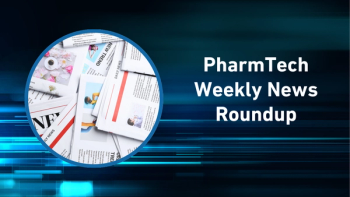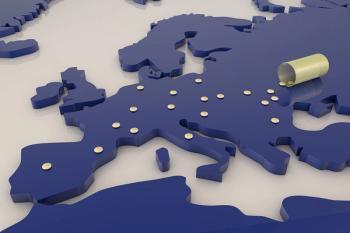
How the Critical Medicines Act Aims to Optimize European Pharma Competitiveness and Resilience
Key Takeaways
- The Critical Medicines Act (CMA) addresses supply chain vulnerabilities by redefining procurement criteria, emphasizing quality, security, and environmental standards.
- European manufacturers gain competitive advantages through innovation and eco-friendly processes, as the CMA values these criteria over cost alone.
Maggie Saykali reviews the key points of her CPHI Frankfurt presentation on the potential game-changing opportunities of the Critical Medicines Act.
In a three-part interview (view those videos
PharmTech: Can you provide an overview of the CMA?
Maggie Saykali: The CMA took a long time to elaborate; the idea for it originated during the pandemic. During the pandemic, we witnessed quite a few shortages that illustrated the existing situation that we all knew about: due to years of offshoring from Europe to Asia, we were very dependent on other regions for the supply of some of our critical medicines, especially generics. From 2020 until 2022, the situation was obviously exacerbated, and it became clear that a solution must come. The European Commission worked with major stakeholders—active pharmaceutical ingredient (API) manufacturers, generics manufacturers, branded medicines manufacturers mainly, but also patient associations, pharmacists, and member states—to identify the root causes for the shortages and find drastic solutions to alleviate or reduce them.
That process began with establishing a methodology to determine what makes a medicine critical. The Commission developed a methodology using a rather complex matrix with different factors, such as the therapeutic family of the medicine, the structure of its supply chain, and the number of suppliers. This helped identify critical medicines and differentiate them from medicines that might be short but do not qualify for criticality. In 2023, the idea arose that Europe needed a Critical Medicines Act, similar to the models for chips or raw materials.
This idea was really pushed hard by a few member states together with the European Commission. A Critical Medicines Alliance was formed, involving about 200 stakeholders. The steering board of this critical alliance included the associations mentioned, plus representatives of patients, pharmacists, and member states. We worked on the possible solutions, and then the Commission compiled this information. In March 2025, the CMA was published by the Director General for Health (DG SANTE)—the directorate in the European Commission responsible for health—with support from the directorates for industry and medical emergencies.
Since then, the CMA has entered the European decision-making process, which involves consultations with the European Parliament and the Council (the European member states). The council, the commission, and the parliament are currently discussing the Act. We think the final vote will happen at the end of this year or the first quarter of 2026, after which it will hold legal value.
What opportunities can the Act bring to EU manufacturers of APIs, intermediates, and starting materials?
We see today a situation in procurement that is completely based on cost and price only, meaning one winner takes the whole tender. This approach provides no guarantees on quality, security of supply, or adherence to environmental or social norms. This is detrimental to European manufacturers, because we have a set of standards (the European regulatory frameworks) that we must comply with. Some suppliers from other world regions do not abide by these standards, resulting in different cost structures.
By addressing the criteria used for procurement, this might give European manufacturers better possibilities to be competitive. By including environmental criteria, as we requested, value will be given to the fact that we produce according to very strict and tight environmental, social, and governance requirements. This means that we will not be penalized because of it, but that it will rather become an advantage for us. Furthermore, we are asking for multi-winner tenders, instead of the "one winner takes it all" approach, which would also be an advantage for those who manufacture in Europe.
This applies to finished dosage forms, active pharmaceutical ingredients, and excipients. We should not forget excipients because many medicines, whether generics or branded, depend on excipients for their mode of action. If we have a shortage of excipients, we are at the same point where we cannot make the medicine. The goal is to make sure there are no causes for vulnerability throughout the supply chain and no possibilities for shortages or delivery of faulty or substandard quality ingredients.
How can the Act help enhance innovation and competitiveness of the industry?
Competitiveness and innovation are very important for European manufacturers. This is the way they can create an added value compared with production in other regions of the world that might still use older techniques or older manufacturing processes and have lower environmental requirements. By valuing and giving an advantage to these criteria, we are pushing for innovation and for more efficient, environmentally friendly processes, such as better control of emissions and better recycling of solvents. Innovation is pushed by the need for competitiveness, so the two go together. Since we cannot compete on salaries or costs, we must compete on quality and innovation.
What will be the global implications of the Act?
We observe that other world regions, such as the US, are adopting something very similar to encourage national production. They are advancing in parallel with the EU. This is the solution if you want to have control over your supply chain and guarantee that whatever crisis happens, you have what is needed to address the crisis. Crises are unpredictable by definition. The essential notion here is not that you should have a stockpile of what is needed, but that you should have the equipment and the infrastructure to produce what you need when you need it. If Europe does not maintain its current level of industrialization and manufacturing for the pharmaceutical supply chain, this ability to produce what is needed when it is needed will dwindle, causing a problem. This is more or less where the US is now, because they have lost a lot of their manufacturing capability and are now more vulnerable even than Europe.
How else is the industry reimagining supply chains to protect against global disruptions?
The CMA addresses this really well, as it includes a chapter on preparedness and a chapter on international cooperations. If you want to be crisis-ready, which is the final purpose of what we are doing, you need to act on both. You need to be able to encourage local production at the best and highest standards of quality possible to be able to make what you need when you need it. But you also need to secure international alliances and cooperations for times of crisis, when you need to have other options as well. By having only one option at the moment, we are making ourselves vulnerable. We saw this during the early phases of COVID, when some supplies failed to arrive in Europe, illustrating a real issue in the delivery of some ingredients needed to make medicines. The pandemic truly highlighted some of the issues that could happen if we don't prepare.
How does the industry plan to maintain competitive advantage as patent cliffs, rising generic competition, and pricing reforms intensify margin pressures?
I can only answer from my perspective, which is that for us, the only way to go forward is to truly put value on something other than just the price. We must push for innovation and technological advances that will give us this competitive edge. If we don't do that, we lose the battle, and that is obvious. In some ways, we have to ask ourselves, “Can we afford to continue as we have always done, and can we afford to only rely on cheap medicines?” They are cheap for a reason.
Newsletter
Get the essential updates shaping the future of pharma manufacturing and compliance—subscribe today to Pharmaceutical Technology and never miss a breakthrough.





